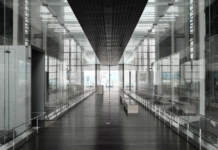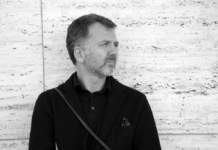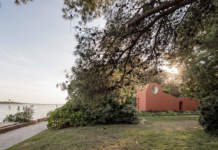Archea Associati, Square and public facilities in Merate, Lecco - photo by Pietro Savorelli
There is a passage, in Calvino‘s Cosmicomiche, which, describing our planet from an unusual point of view, that is, from the inside, subverts our usual way of considering ourselves the world‘s inhabitants; it encourages us to reflect on the possibility of another dimension – less superficial in the literal sense of the word – of living. It helps us to fully understand that the land line does not separate what is alive from what is inert and what is valuable from what is of no substantial importance; that excavation is not just the act of the foundation, it is not just something that comes before the construction, it is not only the premise, but can also be the process of an architectural project (1).
The passage tells of two characters, Qfwfq and Rdix, who, albeit terrestrial, live underground while “a stone sky“ rotates around their heads. An imaginative vision that calls for an analysis of both missed opportunities (many), as well as more educated ones (more than on might think and know) in latest underground architectural design. With this issue, Area contributes to dissolving a die-hard prejudice, which borders underground architecture in a residual universe, considered minor, restoring the centrality it deserves, because in it lies an essential element of the quality of our cities. The ground line is, in fact, one of the new borders, one of the new frontiers where contemporary cities measure the direction of their own future. This poses an inescapable problem of quality. There are so many reasons, and there will continue to be more and more, which determine, or even only suggest, the use of the underground dimension. Sometimes they reside in the need to forgo the external shape, in comparison with the landscape; often they are fruit of a forced constraint, more rarely, but not so sporadically, they result from the quest for an alternative project.
What unites them is the coincidence of the extreme limit with the extreme richness, of the context with the condition. None of these circumstances guarantee alone quality. Anything but.
The projects published in this issue and the essays that precede them, demonstrate both the difficulty of the topic (or rather of the issues), and the possibility for architecture to solve it / them.
No claim, of course, to offer an exhaustive panorama, or to say a final word on a branch of design which - like an underground river – has always flowed beneath our cities. Rather, the attempt to make amends, even if only in the memory of those who read it, the thread of an uninterrupted speech. A flow that has been acquainted with masterpieces such as the museo del Tesoro by Albini in Genoa, where the design of the paving in the courtyard of the Cathedral of San Lorenzo is suffice to evoke the underlying plan of the little gem completely hidden from the outside. A path that in more recent times has been able to compete with unprecedented attention to aesthetics, also in more prosaic projects, as in the case of the underground parking lot of the Nelson Atkins Museum in Kansas City. Here, a play of iridescent light penetrates the park, redesigned by Steven Holl, through the glazed “moons“ placed on the water bottom in the work of Walter De Maria, One Sun, 34 Moons. With this issue, Area speaks of the possibility and ambition – to use once again the words of Calvino – to make the stone sky of the underground world something even more limpid than our cloudy skies.
(1) M. Argenti, Il “rovescio delle città o l’architettura dello spazio cavo“ in E. Piroddi, E. Scandurra, L. De Bonis (a cura di), “I futuri della città“, Milano 2000





